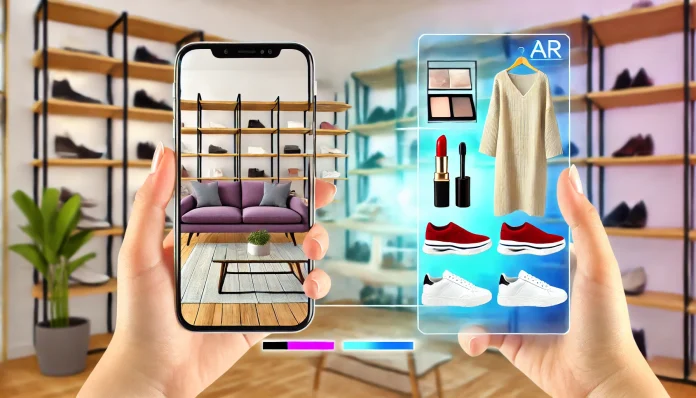In recent years, augmented reality (AR) has transformed from a futuristic concept into a powerful tool for retailers. By overlaying digital content onto the real world, AR offers customers a unique, interactive way to shop, whether they’re browsing in-store or online. For retailers, it represents an innovative approach to engage customers, personalize experiences, and drive sales. This article explores the innovative ways that companies like IKEA, Sephora, Nike, and Warby Parker are integrating AR into their retail strategies, including the use of AR games to drive foot traffic.
1. IKEA: Visualizing Furniture at Home
IKEA has long been known for its focus on customer experience, and its adoption of AR technology is no exception. Through the “IKEA Place” app, customers can visualize how a piece of furniture would look in their home before making a purchase. By placing true-to-scale 3D models of IKEA furniture in real spaces, users gain a realistic view of how items will fit and match with existing decor. This approach not only enhances customer satisfaction by reducing uncertainty but also minimizes returns, a major cost for furniture retailers. Source: Software Suggest
2. Sephora: Revolutionizing Beauty with Virtual Try-Ons
Sephora has embraced AR through its “Virtual Artist” feature, allowing users to virtually try on various makeup products directly from their smartphones. Using their device’s camera, customers can see how products such as lipstick, eyeshadow, and foundation appear on their skin. This feature has become particularly popular as more customers shift to online shopping, providing them with a digital alternative to in-store makeup testing. By allowing users to “try before they buy,” Sephora reduces return rates and fosters greater customer loyalty. Source: Overly App
3. Nike: Perfecting the Fit with AR
For many shoe shoppers, finding the right fit is one of the biggest challenges, especially when shopping online. Nike addresses this problem with its “Nike Fit” feature, an AR-powered tool that scans a customer’s feet to determine the ideal shoe size. By using a smartphone camera, Nike Fit provides a highly accurate sizing recommendation based on the unique shape of each user’s feet. This not only improves customer satisfaction but also reduces the likelihood of returns due to sizing issues. Source: Overly App
4. Warby Parker: Trying on Glasses Virtually
Warby Parker, known for its focus on direct-to-consumer eyewear, uses AR to allow customers to try on glasses virtually. Through its app, users can see how different frames look on their faces, helping them make a confident choice before placing an order. The ability to visualize the frames in real-time enhances the shopping experience, particularly for online customers who may otherwise be hesitant to make a purchase without physically trying on the product. Warby Parker’s use of AR in this way has set a new standard for customer experience in the eyewear industry. Source: Overly App
The Role of AR Games in Driving Foot Traffic
Beyond enhancing online and app-based shopping experiences, AR has also become a valuable tool for attracting customers to physical stores through gamification. Retailers have started using AR-powered games, such as virtual scavenger hunts, to create engaging in-store experiences that draw customers into physical locations. For example, during promotions or special events, stores can create AR scavenger hunts where customers use their smartphones to search for hidden digital items throughout the store. Completing these AR challenges often unlocks rewards or discounts, which boosts engagement and encourages purchases. This gamified experience not only brings more customers into the store but also makes their shopping trip memorable and enjoyable, fostering brand loyalty. Source: Retail TouchPoints
Challenges and the Future of AR in Retail
While AR brings immense potential to the retail sector, implementing these experiences comes with challenges. Developing high-quality AR applications requires significant investments in technology and content. Ensuring a seamless, user-friendly experience across various devices can be complex, and retailers must also prioritize data privacy, especially as AR applications often require access to user data for personalization.
Looking ahead, the future of AR in retail is promising. As technology advances, AR experiences will become more accessible and sophisticated, enhancing personalization and immersion. Integrating AR with artificial intelligence and data analytics could enable even deeper insights into consumer preferences, allowing retailers to deliver hyper-personalized recommendations.
Conclusion
Augmented reality is rapidly reshaping the retail industry by bridging the gap between physical and digital experiences. Companies like IKEA, Sephora, Nike, and Warby Parker have already demonstrated the power of AR to engage customers, streamline shopping decisions, and increase sales. The integration of AR games further highlights how this technology can drive foot traffic, making in-store visits an engaging experience. As more retailers adopt AR and overcome its challenges, we can expect to see even more creative and impactful uses of augmented reality in the years to come.


